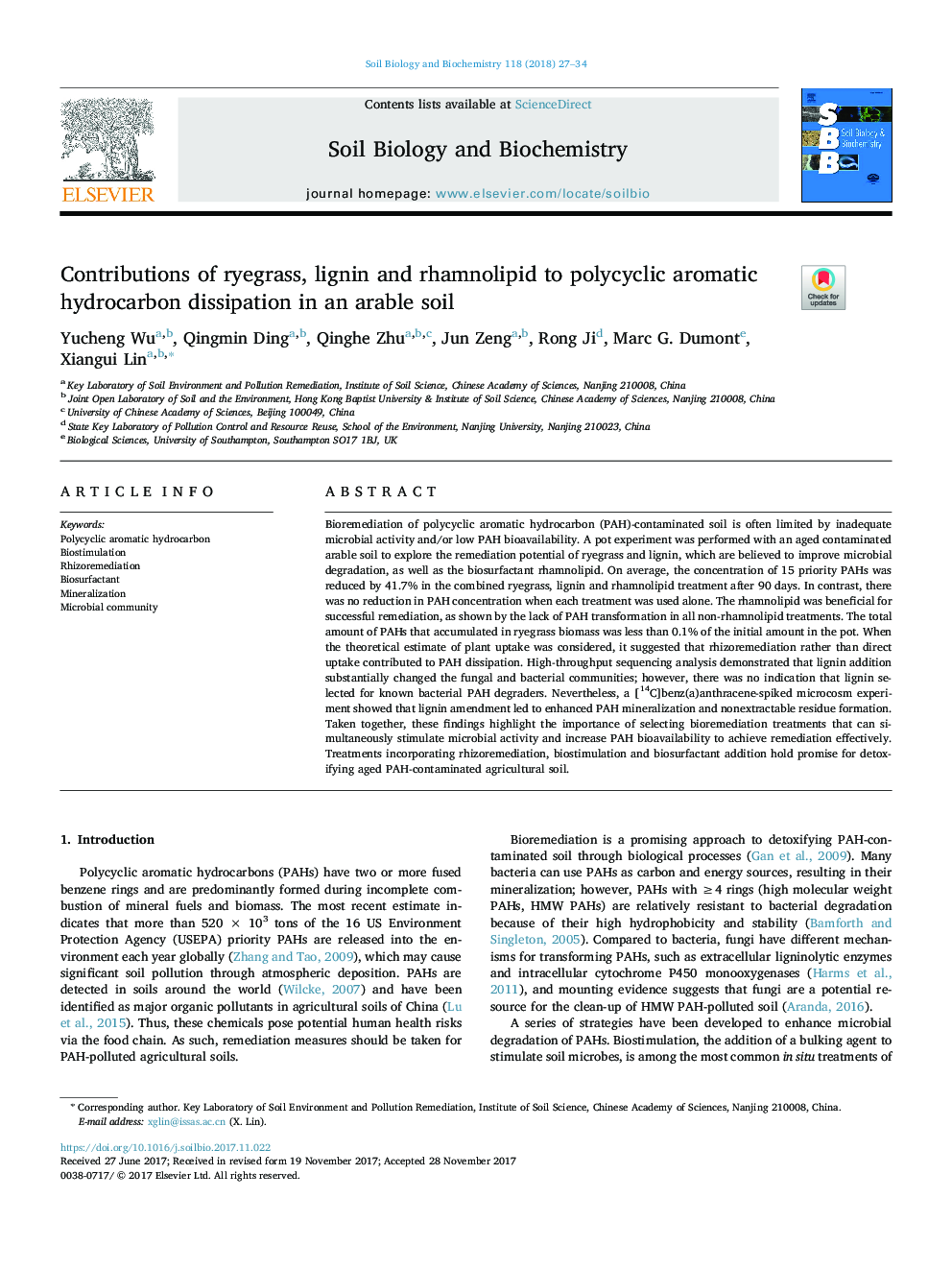| کد مقاله | کد نشریه | سال انتشار | مقاله انگلیسی | نسخه تمام متن |
|---|---|---|---|---|
| 8362951 | 1542566 | 2018 | 8 صفحه PDF | دانلود رایگان |
عنوان انگلیسی مقاله ISI
Contributions of ryegrass, lignin and rhamnolipid to polycyclic aromatic hydrocarbon dissipation in an arable soil
ترجمه فارسی عنوان
مقالات ریگراف، لیگنین و رحمانیلیپید به تجزیه هیدروکربن های آروماتیک چند حلقه ای در خاک های کشتی
دانلود مقاله + سفارش ترجمه
دانلود مقاله ISI انگلیسی
رایگان برای ایرانیان
کلمات کلیدی
هیدروکربن آروماتیک چند حلقه ای، بیهوشی ریزومرژی، بیوسورفکتانت، معدنی شدن، جامعه میکروبی،
موضوعات مرتبط
علوم زیستی و بیوفناوری
علوم کشاورزی و بیولوژیک
دانش خاک شناسی
چکیده انگلیسی
Bioremediation of polycyclic aromatic hydrocarbon (PAH)-contaminated soil is often limited by inadequate microbial activity and/or low PAH bioavailability. A pot experiment was performed with an aged contaminated arable soil to explore the remediation potential of ryegrass and lignin, which are believed to improve microbial degradation, as well as the biosurfactant rhamnolipid. On average, the concentration of 15 priority PAHs was reduced by 41.7% in the combined ryegrass, lignin and rhamnolipid treatment after 90 days. In contrast, there was no reduction in PAH concentration when each treatment was used alone. The rhamnolipid was beneficial for successful remediation, as shown by the lack of PAH transformation in all non-rhamnolipid treatments. The total amount of PAHs that accumulated in ryegrass biomass was less than 0.1% of the initial amount in the pot. When the theoretical estimate of plant uptake was considered, it suggested that rhizoremediation rather than direct uptake contributed to PAH dissipation. High-throughput sequencing analysis demonstrated that lignin addition substantially changed the fungal and bacterial communities; however, there was no indication that lignin selected for known bacterial PAH degraders. Nevertheless, a [14C]benz(a)anthracene-spiked microcosm experiment showed that lignin amendment led to enhanced PAH mineralization and nonextractable residue formation. Taken together, these findings highlight the importance of selecting bioremediation treatments that can simultaneously stimulate microbial activity and increase PAH bioavailability to achieve remediation effectively. Treatments incorporating rhizoremediation, biostimulation and biosurfactant addition hold promise for detoxifying aged PAH-contaminated agricultural soil.
ناشر
Database: Elsevier - ScienceDirect (ساینس دایرکت)
Journal: Soil Biology and Biochemistry - Volume 118, March 2018, Pages 27-34
Journal: Soil Biology and Biochemistry - Volume 118, March 2018, Pages 27-34
نویسندگان
Yucheng Wu, Qingmin Ding, Qinghe Zhu, Jun Zeng, Rong Ji, Marc G. Dumont, Xiangui Lin,
